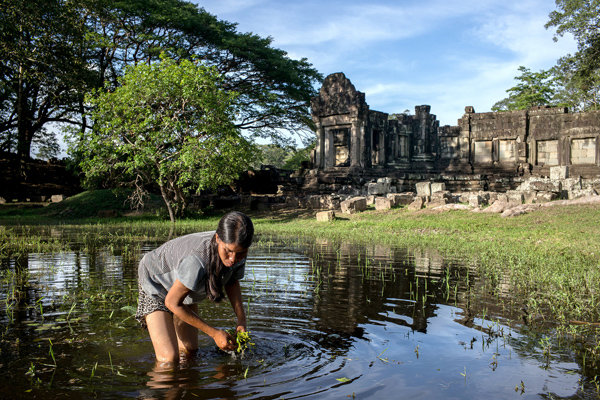
They spent entire careers trying to spot mounds or depressions in the earth that would allow them to map even small parts of Angkor, the urban center at the heart of the Khmer empire, which covered a vast region of what is now Cambodia, Thailand, Vietnam and Laos from roughly A.D. 802 to 1431. In modern times, little material evidence existed beyond a network of monumental stone temples, including the famed Angkor Wat, and the sprawling settlements that presumably fanned out around the temples long since swallowed up by the jungle.
But earlier this year, the archaeologists Shaun Mackey and Kong Leaksmy were armed with a portable GPS device containing data from an aerial survey of the area that is changing the way Angkor is studied. The device led them straight to a field littered with clods of earth and shot through with tractor marks. It looked to the naked eye like an ordinary patch of dirt, but the aerial data had identified it as a site of interest, a mounded embankment where the ancestors of today's Cambodians might have altered the landscape to build homes.
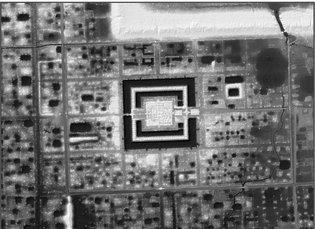
"It's not sexy, like a temple, but for an archaeologist it's really interesting that we have this representation of cultural activity," he said. He and Ms. Kong Leaksmy are part of a consortium of scholars called the Cambodian Archaeological Lidar Initiative (CALI), which uses a technology known as lidar to shoot ultraquick pulses of light at the ground from lasers mounted on helicopters. The way they bounce back can show the presence of subtle gradations in the landscape, indicating places where past civilizations altered their environment, even if buried beneath thick vegetation or other obstructions.
The soft-spoken, fedora-clad Mr. Mackey, a 14-year veteran of fieldwork here, noted that before lidar's availability, an accurate ground survey of archaeological features in the Cambodian landscape entailed years or even decades of work.
"We've all spent hours getting clawed and shredded by bamboo forests with thorns or dense scrub and bush, in the hope that we might find something," Mr. Mackey said.
CALI's helicopters flew for 86 hours in March and April of 2015 over 1,910 square kilometers, or 737 square miles, with Buddhist monks blessing the lidar sensors before takeoff. The data generated during the flights, based on roughly 40 billion individual measurements, is now being verified and made public.
"We had hit a roadblock in terms of technology until recently," said Damian Evans, the archaeologist who heads the initiative. "The vegetation was obscuring these parts of Angkor and other monumental sites. The lidar allowed us to see through the vegetation."
The Secrets of an Empire
The result, Dr. Evans said, has been an unprecedented new understanding of what the Khmer empire looked like at the apex of its power, with lidar-generated maps revealing an intricate urban landscape stretching across several provinces of modern-day Cambodia, along with a sophisticated network of canals, earthworks and dams that the Angkorians used to control the flow of water.
"It is pretty amazing," he said. "The larger the temples are, the larger the urban infrastructure around it is likely to be, so they weren't lost, in the sense that we assumed that they must be there. But, of course, that is an entirely different thing from being able to see it in incredible detail and how it works and how it functioned, how it evolved, the morphology of these places."
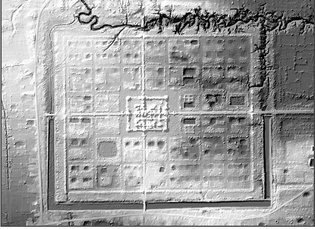
Although the Khmer empire's great stone monuments have endured for centuries, spawning a $60-million-a-year tourism industry and preserving information about the dynasty of god-kings who ordered their construction, the stuff of everyday life at Angkor, made from wood, mud, thatch and brick, has long since rotted away in the hot and humid climate. Almost nothing has been known about the lives of those who built the temples and served its rulers — who they were, how they lived, what they believed.
David Chandler, a professor emeritus at Monash University in Melbourne, Australia, and a leading historian of Cambodia, said the new lidar data was particularly exciting because it was providing more information than ever about how ordinary people lived in the Khmer empire.
Historians had assumed that the residents of Angkor existed — "these temples certainly didn't get built by themselves," Dr. Chandler said — and they had cobbled together some understanding of the area's population through inscriptions, notes from a Chinese diplomat who visited Angkor, and a few other sparse clues. Dr. Chandler compares the process to trying to understand American history from a small collection of obituaries and Fourth of July speeches.
But with lidar-made maps, people who had spent their lives trying to retrace Angkorian history could actually see for the first time an intricate network of houses, gridded streets, canals, bridges and even mud-and-brick palaces.
"People imagined it was a city, but they didn't know how to imagine it, because they didn't know what it looked like, Dr. Chandler said. "Now they do."
"This is where Angkorian research is going to go from now on: research into the people who built the temples, not the people whom it was built for," he added. "It's putting the population of the city back in view."
The Greater Angkor Project, a team from the University of Sydney in Australia, has been trying since 2010 to identify and excavate ancient mounds believed to have been households in the Angkor Wat compound. When the team started its research, it spent months simply trying to identify where all the mounds were. But after it received preliminary lidar data in 2012, it realized immediately that the mounds were arranged in a tight grid pattern, indicating houses lined along roads, as in a modern city.
"Lidar made everything new and exciting," said Heng Phipal, a Cambodian archaeologist who worked with the project.
Unearthing Ordinary Life
Since then, members of the project have used lidar to target areas for deeper excavation, unearthing sandstone from the temples that might have been recycled into floors for city dwellers, and analyzing a garbage dump on the Angkor Wat grounds full of burned food remains and broken ceramics. They have found some of the first evidence of what Angkorians ate (rice and pomelo fruit) and how they cooked (in earth pots over fires). And they have come to understand that the gridlike pattern inside Angkor is just part of a much larger urban agglomeration, challenging conventional wisdom that the temple cities were discrete and self-contained.
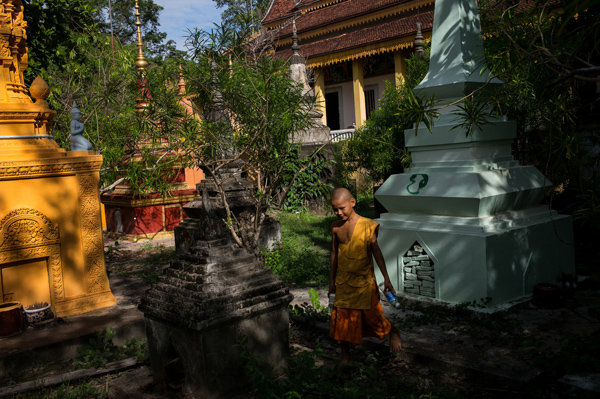
Being able to see the true scope of the city has led to discoveries in other areas, too. Lidar has helped find the giant quarry field where most of the sandstone to build the temples was taken from, and has identified mysterious earthen spirals close to Angkor Wat and a few other temples that might have served aesthetic or religious purposes.
At a remote but massive temple called Preah Khan of Kompong Svay, which the Khmer king Jayavarman VII used as a base to raise an army against invaders from the east, scholars had worked for over a decade to determine what lay below the surface, with little success. They ultimately concluded that the area was not thickly settled. But the lidar data revealed a dense cityscape that even included the same spirals seen at Angkor Wat, and helped pinpoint areas for archaeologists to dig that had not been looted.
In other cases, what lidar has not found is just as revealing. At the temple Banteay Chhmar, on the Thai border, archaeologists had also struggled to find evidence of settlement. The lidar data confirmed this, leading Dr. Evans to conclude that it was not the center of a city but perhaps a temple or a garrison that saw only waves of temporary settlement.
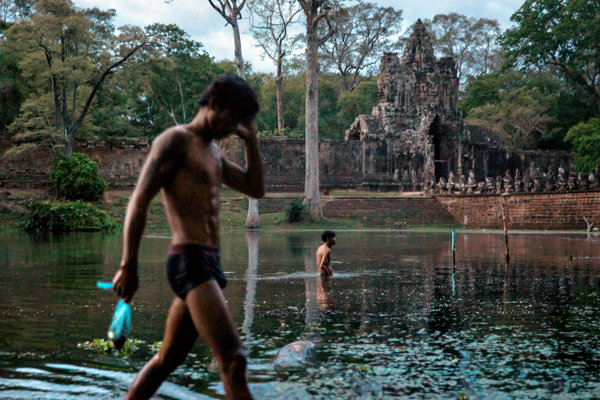
But when these areas were scanned, there was no evidence of an influx of refugees. This suggests that while there might have been a political schism in 1431 that induced members of the royal family to move closer to Phnom Penh, the vast majority of people stayed near Angkor and only gradually moved away.
This understanding is unfolding day by day as the research continues. At Site 305, for example, Mr. Mackey and Ms. Kong Leaksmy uncovered bits of water jars, showing that the area included households, and shards of blue-and-white Chinese tradeware dating from after the 1400s.
"This helps feed into the concept that Angkor wasn't really abandoned," Mr. Mackey said.
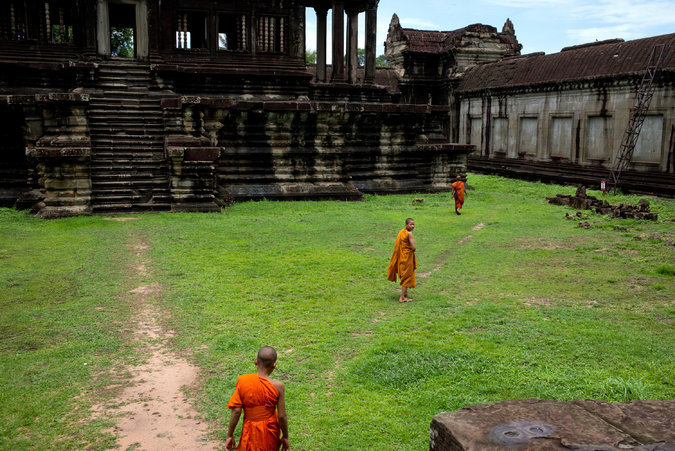
To Ms. Kong Leaksmy, a recent university graduate who used lidar data to write her thesis on a small temple called Banteay Sra, the takeaway was simpler.
"I can see many, many points that I cannot see just by eye," she said of the new tool. "It's amazing for me."




Why spend all that money on LIDAR to see through foliage. Just buy some surplus Agent Orange! (Sarcasm.)
R.C.